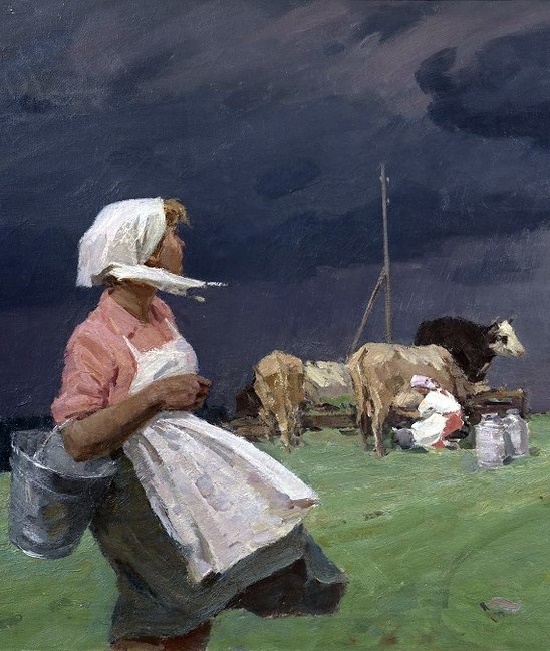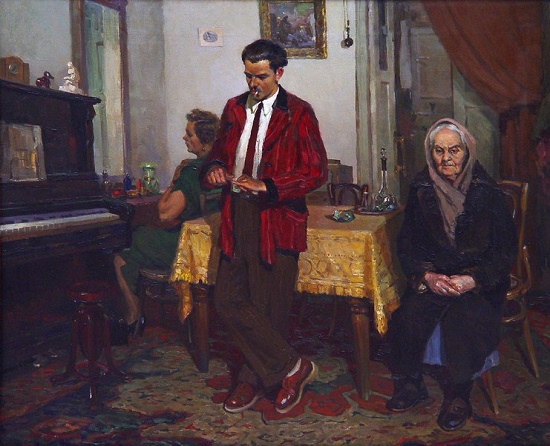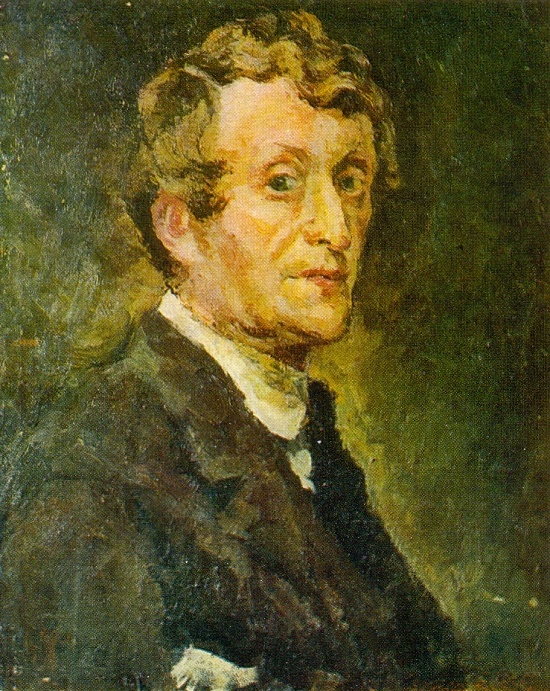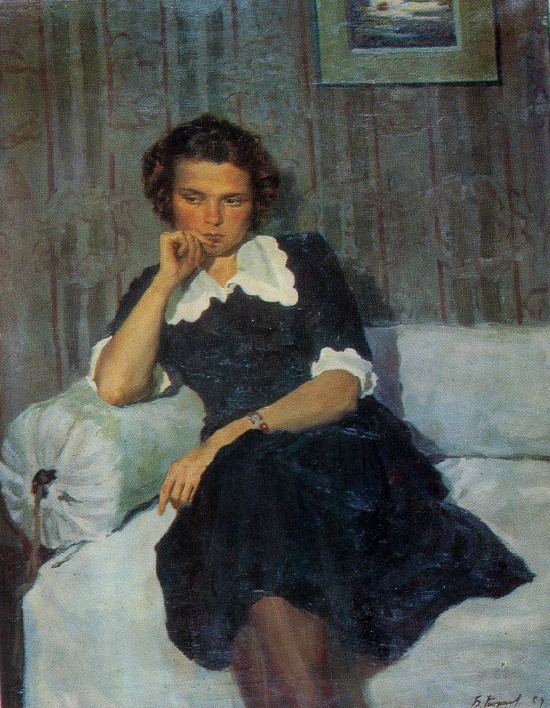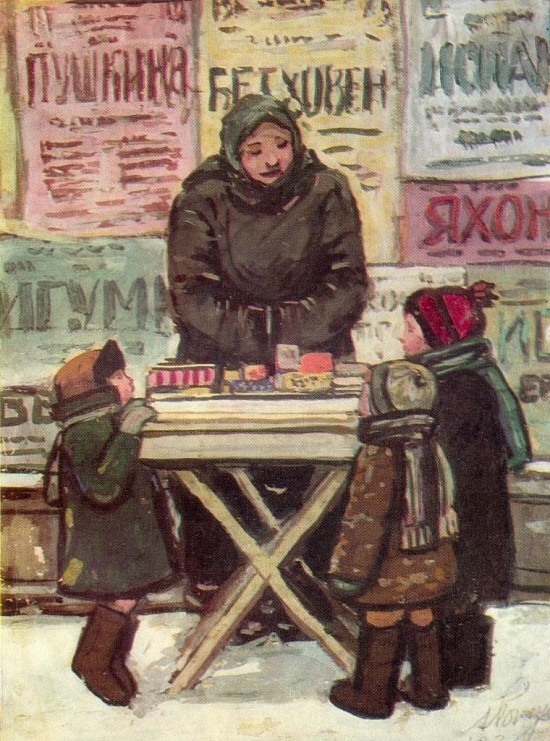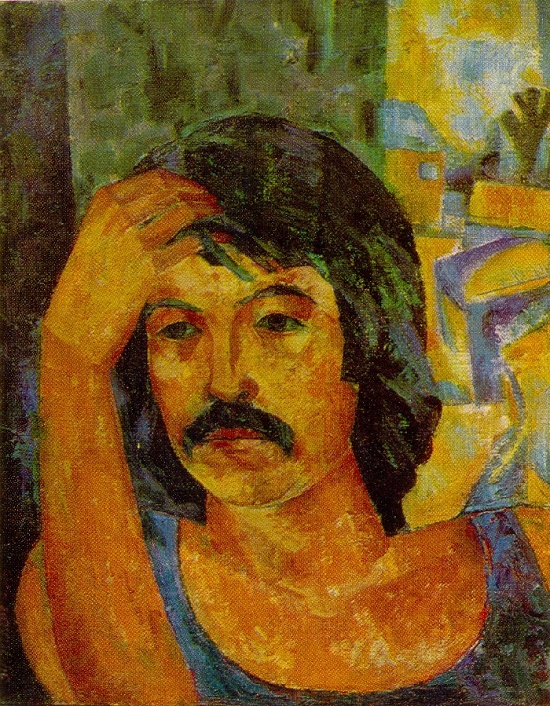Soviet artist Yuri Mikhailovich Neprintsev 1909-1996
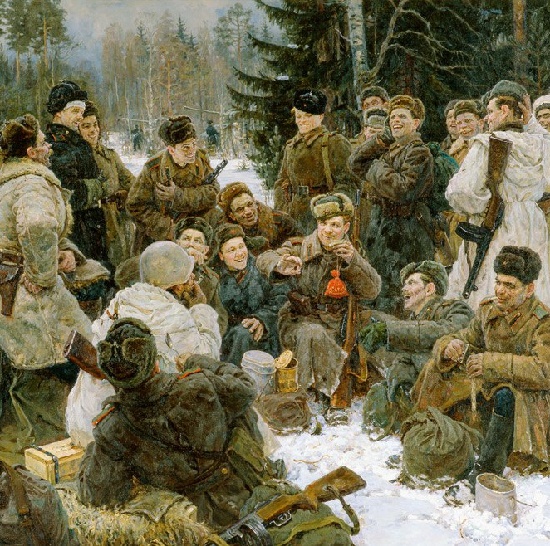
Rest after the battle. (Vasiliy Tyorkin), 1951. Fragment. Soviet artist Yuri Mikhailovich Neprintsev (1909-1996)
Soviet artist Yuri Mikhailovich Neprintsev
His most famous work is the painting “Rest after the battle,” for which he was awarded the Stalin Prize of the first degree in 1952. After the war began, the artist volunteered for the front, served in the fighter battalion and active units of the Red Banner Baltic Fleet, and participated in the defense of Leningrad. Therefore, the picture reflects his personal observations and experiences. In addition, the famous poem by A. Tvardovsky “Vasily Turkin” influenced Neprintsev. Meanwhile, Soviet authorities presented the original of the painting “Rest after the battle” to the head of the People’s Republic of China Mao Zedong. And one of the versions, also created by Neprintsev, is in the Tretyakov Gallery.
Soviet painter, graphic artist, teacher, professor, Academician of the Academy of Arts of the USSR, People’s Artist of the USSR, Yuri Mikhailovich Neprintsev was a laureate of the Stalin Prize of the first degree.
In the post-war years, Yuri Neprintsev created a series of paintings dedicated to the heroic struggle of the Soviet people against fascist Germany: The Last Grenade (1948), Liza Chaikina (1949), Rest after the Battle (1951), and The Story of the Father (1955).
More »
